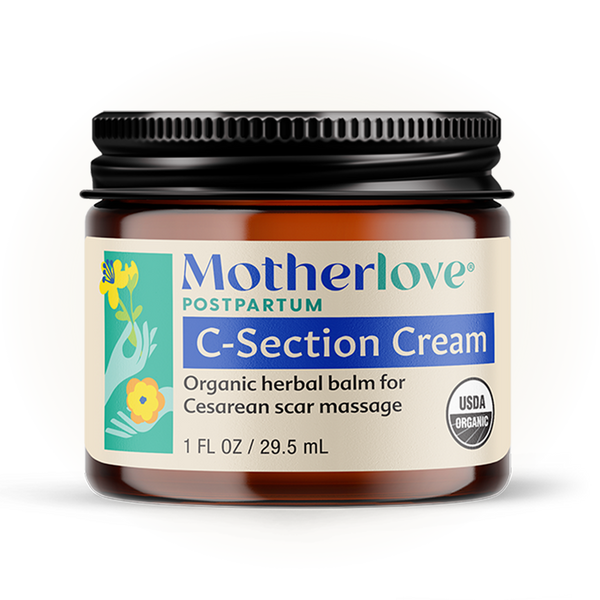Many mothers worry that breastfeeding will be more difficult after they have a Cesarean birth. While there is some truth to this claim — C-section births are major abdominal surgeries, and the medications given to you can affect your body — the majority of mothers who wish to breastfeed after having a Cesarean birth can have a successful milk-making journey.
In fact, breastfeeding after a C-section birth can lift your mood and help you bond with your baby. If your delivery process was unexpected or you experienced childbirth trauma, breastfeeding can be very healing for both you and your baby.
HERE ARE SOME TIPS FOR MAKING BREASTFEEDING AFTER A C-SECTION BIRTH GO AS SMOOTHLY AS POSSIBLE:
1. Choose A Breastfeeding-Friendly Hospital
If you know in advance that you will have a Cesarean delivery, try to pick a hospital that is known to be breastfeeding-friendly, or that is designated a Baby-Friendly Hospital™ (BFHI). These hospitals are more likely to give you optimal time with your baby and will encourage breastfeeding while in their care. Baby-Friendly Hospitals are required to implement breastfeeding-friendly policies, such as limited use of formula supplements while encouraging “rooming in” practices.
2. Nurse As Soon As Possible After Birth
Studies have found correlations between Cesarean section births and a delay in the start of milk production. One of the ways you can work around this is to breastfeed soon after birth, which encourages your body to begin the milk production process. If you aren’t able to breastfeed right away, that is okay! But, you may want to ask that your baby be brought to you as soon as possible. If you or your baby have a medical issue that makes it impossible to nurse right away, ask for a pump or hand express so that you can stimulate milk production.
3. Practice Skin-To-Skin
Another proven way to boost milk production and get breastfeeding established is to practice skin-to-skin. Even when your baby isn’t nursing, strip them down to their diaper, and have them sleep against your chest. You may even find that your baby wakes up and starts rooting around for the breast. Allowing for skin-to-skin contact can help boost your baby’s natural breastfeeding instincts.
4. Try Different Breastfeeding Positions
At first, you will need to avoid breastfeeding positions that place your baby directly on your birth scar. Do not worry about not being able to breastfeed in traditional positions — there are several other ways to breastfeed without irritating your surgical scars. For example, you can try laying down on your side, where you and your baby can rest belly to belly, and nurse. You can also try the football position, where your baby is wrapped horizontally around the side of your body and latches this way. You may also try different arrangements of pillows to help make these positions more comfortable, and getting help from a lactation consultant can work wonders.
5. Breastfeed Frequently
Another proven way to ensure that your milk supply gets off to a good start is to breastfeed frequently. The way milk production works is like this: “the more milk you take, the more milk you make.” The more frequently your baby breastfeeds, the more robust your milk supply will end up being down the road. Aim to breastfeed about every 1-3 hours, going by your baby’s cues. Never hesitate to feed your baby!
6. Get Help With Any Issues Early
Not every breastfeeding issue you have will be related to your C-section birth. But because C-section births make it more likely that you will encounter bumps on the road, you should be especially proactive in getting help for any breastfeeding issue you encounter. Most hospitals have lactation consultants on hand. Request as many meetings with the lactation consultant as you need. For further help, consider contacting a lactation consultant who can help you after your hospital stay.
7. Use Pain Meds Wisely
You don’t want to take more medication than you need, but you also don’t want to hesitate to take whatever pain medication your doctor prescribed to help manage your post-C-section birth pain. A mom in pain will not breastfeed well! You should know that most pain medications are compatible with breastfeeding — contact your doctor or consult LactMed (a government-sponsored database about medications and breastfeeding) if you have any concerns.
8. Rest, Rest, Rest!
You are recovering from major surgery, so you need your rest. Remember all those folks who said they wanted to help you after your baby arrived? Take them up on those offers now. Have them visit you in the hospital and hold your baby while you get some rest. Have them feed you nourishing foods, and keep your water bottle filled (you are going to be so thirsty when you are breastfeeding)! If you want to be the amazing breastfeeding mama you are destined to be, you’ve got to take care of YOU first.
Remember, it takes several weeks to recover from a C-section birth fully, so take it easy even once you get home. The good news is that resting in bed snuggled up to your baby is actually good for breastfeeding too! So go ahead and get under the covers, keep that baby close, and nurse on, mama!




